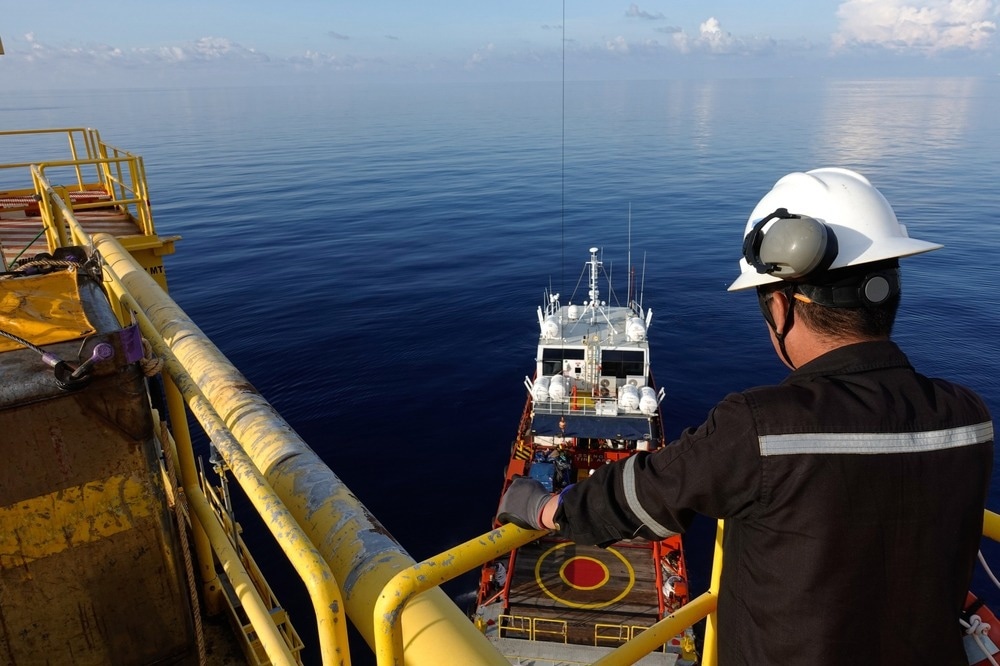 By Surbhi JainReviewed by Susha Cheriyedath, M.Sc.Jul 19 2022
By Surbhi JainReviewed by Susha Cheriyedath, M.Sc.Jul 19 2022In a review recently published in the journal Science of The Total Environment, researchers discussed the utility of gas flotation for emulsified crude oil separation from generated water.

Study: Separation of emulsified crude oil from produced water by gas flotation: A review. Image Credit: Believeme/Shutterstock.com
Background
Most nations use oil as their main source of energy, and the extraction and refinement of oil and gas results in significant amounts of generated water, often known as produced water (PW). When oily generated water is released into the environment, it will put aquatic ecosystems at risk, devastate ecological functions and resources, and have an impact on people's health. Dealing with and recycling oily PW has emerged as a key issue in environmental engineering sectors. There are numerous approaches to dealing with PW-related oily wastewater. Gravity separation, biological treatment, hydrocyclone, flotation, coagulation/flocculation, adsorption, membrane separation, and advanced oxidation process (AOPs) are the most frequently employed PW treatment methods.
Tiny oil droplets cannot be separated from PW by cyclone separators. The gas flotation technique, in contrast, is a popular research topic for scientists and many oil fields and water treatment facilities because it is a cost-effective and environmentally beneficial method.
About the Study
In this study, the authors evaluated and described the various flotation methods, which included electroflotation, induced gas flotation, dissolved gas flotation, and compact flotation units.
The team studied the mechanism of the oil droplet-bubble interaction in light of the complexity of the oil removal by the air flotation method. From the standpoint of the microscopic colloidal interface, which played a specific directing function in enhancing the oil removal effectiveness in the gas flotation process, the impacts of flocculant, PH, and salinity on the oil droplet-bubble interaction in the flotation process were summarized. A possible study direction was presented after a summary of the current state of the research on generated water purification by air flotation.
The researchers introduced the oil qualities of PW, which were crucial to understanding both the benefits of oily PW as a treatment and its negative effects on both people and the environment. Further, a summary of the different forms of flotation and an analysis of the characters were provided.
The mechanism by which oil droplets and bubbles interact during the flotation process was addressed, and the variables influencing this interaction were discussed. A summary of the present research on the flotation method and the potential future direction of gas flotation for PW treatment was provided.
Observations
Condensate served as a solvent for the dissolving of the organic material that was removed from the aqueous phase and then washed away with condensate gas during the separation phase. This demonstrated that hydrocyclones' removal of dispersed oil was 90% more effective than when no condensate was injected. The ideal value for effective flotation was thought to be the oil droplet-bubble radius ratio of about 7.4 x 10-3. The bubbles' steady-state size ranged from 10 to 100 μm, with an average bubble diameter of about 40 μm. Compared to flocs created at 30 and 40 °C, those formed at 20 °C had fewer, bigger oil droplets that agglomerated more. Seawater had a 3% higher density than fresh water.
The amount of PW in the oil fields increased over the last few decades. The water treatment process faced substantial obstacles as a result of the increase in PW content. Three processes were commonly taken in order to remove oil from PW, and each had a distinct objective. Secondary treatment was used to get rid of emulsified oil. Flotation was a suitable secondary treatment procedure for oily PW that could lessen the harmful effects of chemical agents and offer a reliable way to separate the oil from the water.
As a result, flotation emerged as the key component of PW treatment. According to the various bubble generation techniques and flotation tank structures, the flotation process could be categorized into Dissolved gas flotation (DGF), Induced gas flotation (IGF), Electroflotation (EF), and a Compact flotation unit (CFU), which are frequently employed in marine platforms.
The interaction between oil droplets and bubbles during the flotation process received plenty of attention in recent years. The likelihood of oil droplet bubbles colliding, adhering to one another, and stabilizing was heavily dependent on the flotation process' capacity to remove oil.
There was no mathematical model of the effectiveness of bubble particle turbulence collision related to flotation because the droplet-bubble collision in the flotation process, particularly in the cyclone flotation process, was exceedingly complex.
Conclusions
In conclusion, this study discussed DLVO (van der Waals force and electrostatic repulsion force) and non-DLVO (hydrophobic force) during the interaction of oil droplets and bubbles. The adhesion force of bubbles and oil droplets was greatly influenced by the various water environments, and the interaction process between the bubble and oil droplet in river water, deionized water, and seawater differed. The authors mentioned that when studying the oil removal effect and optimizing the flotation process's parameters in engineering, the flotation environment must be taken into full account since seawater contains more ions, which significantly changes the colloid surface potential.
The size of the colloids also caused varied collision efficiency at different turbulent eddies. The team emphasized that in order to discover the best formula for oil removal efficiency, future studies should concentrate on the interaction of affecting components.
More from AZoM: Can Machine Learning Reduce AFM Uncertainty?
Disclaimer: The views expressed here are those of the author expressed in their private capacity and do not necessarily represent the views of AZoM.com Limited T/A AZoNetwork the owner and operator of this website. This disclaimer forms part of the Terms and conditions of use of this website.
Source:
Wang, C., Lü, Y., Song, C., et al. Separation of emulsified crude oil from produced water by gas flotation: A review. Science of The Total Environment 157304 (2022). https://www.sciencedirect.com/science/article/abs/pii/S0048969722044023.